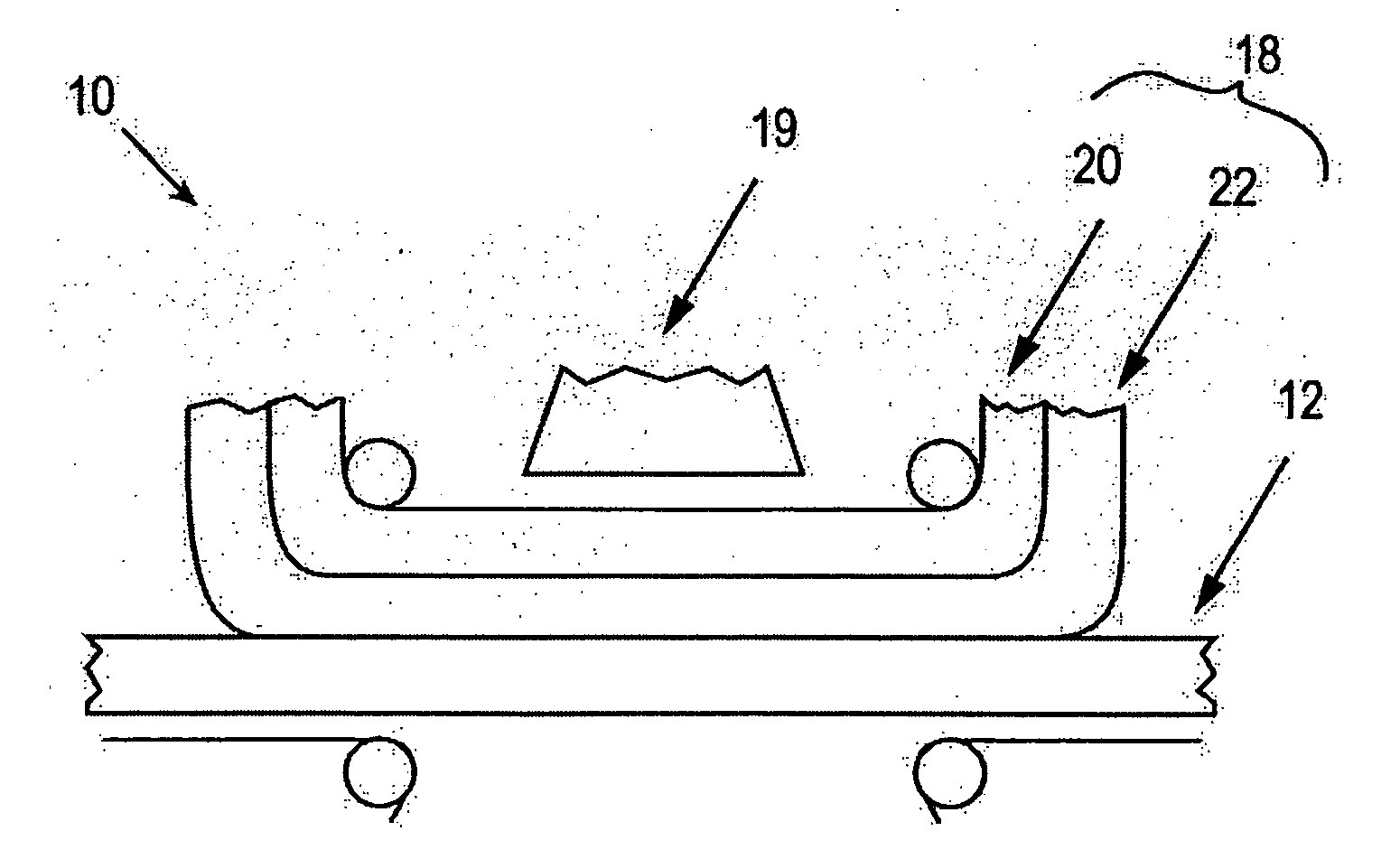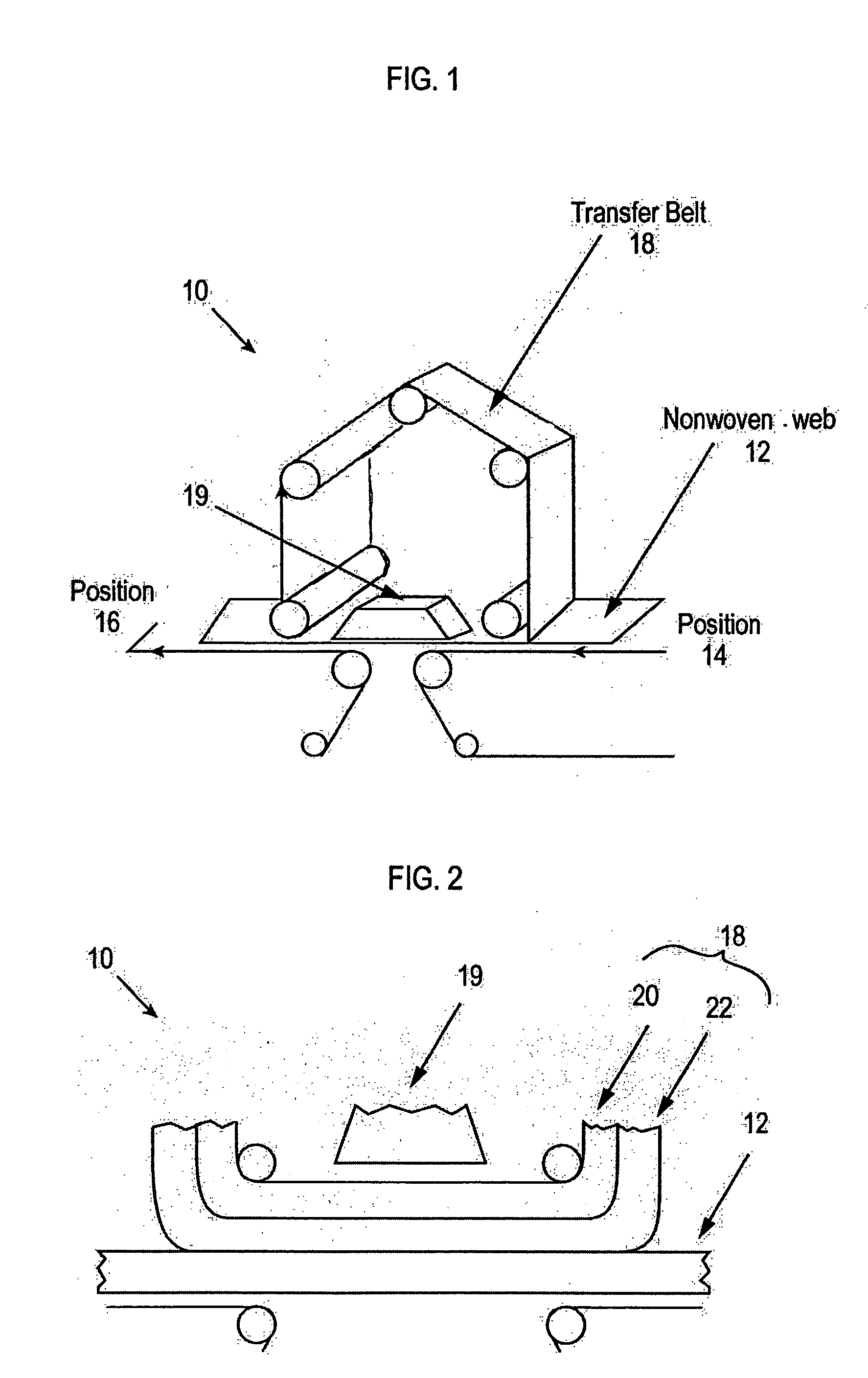Antistatic transfer belt for nonwovens process
a technology of antistatic transfer and nonwovens, which is applied in the direction of weaving, synthetic resin layered products, mechanical instruments, etc., can solve the problems of damage to the forming wire, and no prior art technology provides for antistatic transfer belts for use, so as to maintain the desired permeability of the belt
- Summary
- Abstract
- Description
- Claims
- Application Information
AI Technical Summary
Benefits of technology
Problems solved by technology
Method used
Image
Examples
Embodiment Construction
[0022] Turning now more particularly to the figures where like elements will be similarly numbered, FIG. 1 shows schematically a part of an apparatus 10 for producing a non-woven web 12 by a process other than weaving, for example, by airlaid, drylaid, or spunlace processes. During the transfer of the web 12 before handling from a first position 14 to a second position 16, a large amount of static electric charge is built up on the web 12 and the transfer belt 18, which is undesirable. Related to this concern is the need for the transfer belt 18 to be permeable to air drawn through a vacuum system 19 that assists with the transfer of the web 12.
[0023] Advantageously, the present invention is a transfer belt for use in a nonwovens process which dissipates the static electric charge, whilst maintaining the desired air permeability. In this regard, shown in FIG. 2 is a cross section of the antistatic transfer belt 18 used in the present invention. The transfer belt 18 comprises a base...
PUM
| Property | Measurement | Unit |
|---|---|---|
| electrically conductive | aaaaa | aaaaa |
| air permeability | aaaaa | aaaaa |
| conductive | aaaaa | aaaaa |
Abstract
Description
Claims
Application Information
 Login to View More
Login to View More - R&D
- Intellectual Property
- Life Sciences
- Materials
- Tech Scout
- Unparalleled Data Quality
- Higher Quality Content
- 60% Fewer Hallucinations
Browse by: Latest US Patents, China's latest patents, Technical Efficacy Thesaurus, Application Domain, Technology Topic, Popular Technical Reports.
© 2025 PatSnap. All rights reserved.Legal|Privacy policy|Modern Slavery Act Transparency Statement|Sitemap|About US| Contact US: help@patsnap.com


